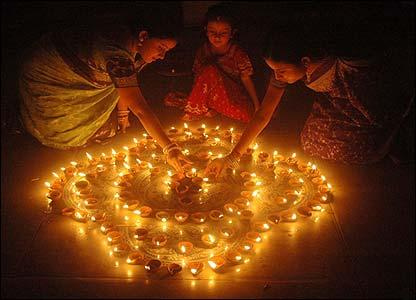Diwali or Deepavali, although has its origins in the Indian subcontinent, it is celebrated all over the world in many different ways. With global exposure and a rise of new methods of celebration by different cultures have slowly lead to a commercialization of the holiday.
It is one of the biggest holiday celebrated the day after the Gujarati New Year. Although it used to mean the victory of good over evil, it has been slowly going into the route of rebirth. This may be one of the major reasons people all over the world believe in the misconception that Diwali is the Indian New Year.
Regardless of its evolving meanings, it has become one of the most prospective holiday to make a lot of money for businesses. In India, people tend to buy new clothes, fireworks, food, and items needed for the religious ceremonies which range from food to giving donations to the priests.

Ethnic Clothing for Women
With the continuing rise of the Indian middle class due to globalization, Indians are acquiring more disposable income than ever before. With this increased income, Indians are able to spend more money on anything desire, especially shiny stuff. Throughout my visits throughout the Indian subcontinent I noticed that people there love gold. The purchase of gold and other physical products that tend to visually shine and glow are increasingly on the rise within the subcontinent, especially during the times of Diwali.
Diwali to Indians can most commonly be understood by what Christmas is to Americans. Both of the holidays are near the end of the financial year for many businesses. Both holidays are also times of the year when people buy a lot of material goods for themselves and gifts for others. In some parts of the subcontinent, the very day of Diwali is representative of the day of prosperity. Business heavily “discount” many products to get sales through, similar to the way businesses make sales during Christmas in America.

Candles needed for the ceremonies
When people make Rangolis and perform Lakshmi Pujan, they are celebrating financial prosperity. By performing such ceremonies and participating in activities associated with the ceremonies, they are basically praying to the goddess Lakshmi. Ma Lakshmi is the goddess of prosperity, fortune, and wealth. Therefore, I guess it may be safe to say the holiday was always about making a fortune and celebrating it as can be presumed by the ceremonies that performed for the holiday.
During this holiday, the entire county of India tries to shine as much as it can look its best. During the days of Diwali, tourism helps to contribute significantly on the increasing commercialization of the holiday. Tourists tend to not deviate from the general population in terms of celebrating the holiday. They buy new clothes and stay at places where a lot of fireworks and fire crackers are present.
